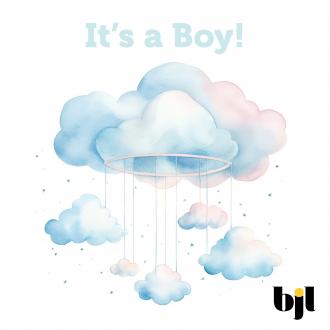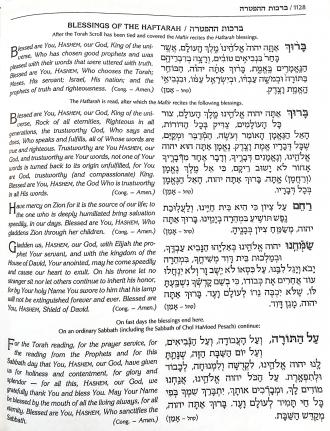In an ancient Midrash, Mishnas Rebbi Eliezer, the teachings of the great Tanna, Rebbi Eliezer the son of Rebbi Yosi HaGalili, it quotes Rebbi Yosheyah who taught that women are equally destined to an ultimate reward no less than men. He bases this on the Torah's description of the people's response to the appeal to donate material for the Mishkan.
The men came with the women; everyone whose heart was motivated brought bracelets, nose-rings, body ornaments — all sorts of gold ornaments… (שמות לה כב)
Every wise-hearted woman spun with their hands…all the women whose hearts inspired them with wisdom spun the goat hair. (שם שם כה-כו)
He made the Laver of copper and its base of copper, from the mirrors of the legions of women who massed at the entrance of the Tent of Meeting. (שם לח ח)
It is not clear what he saw in these verses as indicative of their stature equal to men and thus similarly worthy of reward.
Perhaps he sees in the Torah's accenting how 'the men came with the women' — as Rashi explains that this indicates the men were secondary to the women and merely accompanying them, as it was the women who so generously relinquished their cherished jewelry to the Mishkan — and thus alludes to their equal stature and reward.
But what are we to make of the other verses he quotes? Is the fact the Torah records the special talents and generosity of the women evidence of their equal standing?
It is rather noteworthy that the women exclusively, and not the men, were singled out for their special contributions.
We are taught that it was their eagerness to donate their jewelry now for the purpose of constructing an abode for the Divine Presence — in contrast with their absolute refusal at the Sin of the Golden Calf to surrender their gold for the casting of the golden calf — that they were rewarded to be associated with Rosh Chodesh as a day which they observe more than the men.
The status of Rosh Chodesh as a day of celebration is couched in mystery. Nowhere in Chumash is it noted as an established holiday. Though we do find that King David refers to it in a discussion with his friend Yehonoson, commenting how "tomorrow is the New Moon, when I would usually sit with the king to eat." Elsewhere we find the Shunamite woman tells her husband she is going to see the prophet Elisha and he questions her motive asking, "Why are you going today, it is not the New Moon…"
The sole reference as a bona fide holiday where we will ascend to the Temple as we do on the Three Festivals, appears in the next to the last verse in Book of Yeshayahu — which we repeat upon the conclusion of its reading on Shabbos Rosh Chodesh.
And it shall be that, from the New Moon to New Moon… all flesh shall come to prostrate themselves before Me, said G-d. (66 23)
The Yalkut Shimoni adds:
In this world you went on the pilgrimage to Yerushalayim three times a year, when the end of time will come, you will go up for the pilgrimage every new month....
Reb Tzadok The Kohen from Lublin, teaches that whereas all the holidays we celebrate are in based in the past and cycle upward each year, returning to its point of origin, infusing us with its latent power, Rosh Chodesh is a Yom Tov that we have yet to achieve fully. The months similarly spiral upward, with our commemorating each New Moon and its unique spiritual influence as we course through the year, questing the day we will sense it in its fullest expression.
Pirkei D'Rebbi Eliezer informs that women are equipped with a nature that constantly rejuvenates, not only in the physical sense, but spiritually as well.
Women possess the qualities that enable them to maintain their sites on a brilliant future, never falling prey to the challenges of the present that often seek to douse our hopes and aspirations, teasing us with defeatism.
When Moshe seemingly delayed his descent from Mount Sinai, the menfolk wallowed in fear and succumbed to resignation. The women refused to participate because they kept the eye on the goal. This strength found its fullest expression when upon hearing of the opportunity to pledge material to the building of a residence for the Divine Presence, they enthusiastically relinquished their dearest תכשיטים — ornaments for something much greater.
This past week I had the opportunity to participate in a Bar Mitzvah of a remarkable young man, a child of inspired parents who were born and raised by parents whose soul was ripped from them under communism in the Soviet Union.
The boy's maternal grandfather growing up in Minsk, knew very little about Yiddishkeit. But one memory stuck with him from a very young age that awakened his soul and pushed him to enroll his children in Jewish schools after arriving in the United States that lead to his daughter's full return, and privilege to raise a religious family.
When he was five years old, he noticed late one Friday afternoon his grandmother lighting candles. Bewildered, he innocently asked her what she was doing. Suddenly she broke out in bitter tears. He was traumatized by her outburst and was left with an indelible image of that moment. When he matured, she explained that her reaction was due to her pain in realizing here she was a woman longing with hope for a Jewish future for her descendants and yet her beloved little 'tachshit' — jewel, didn't even know what Shabbos was. It was that longing for something greater than mere survival and success that accompanied him on his journey of return.
The women who 'spun the goat hair' with heart inspired wisdom, we are told refers to their having spun the wool while it was still attached to the goats. Some suggest that this innovation was introduced by these enthused women to allow them to continue fashioning the items for the Mishkan even while they were in a state of monthly impurity, since the goat hair while still connected to a live body is not susceptible to impurity. In the journey towards the future one must be resourceful and resilient and never perturbed by obstacles that we may encounter on that path, improvising solutions to keep us going toward our objective.
At that earlier cited Bar Mitzvah another fascinating piece of the family's history was revealed. The paternal grandfather's mother feared after he was born that undergoing a Bris was too risky and might interfere with his future enmeshing with the wider community. However, the newborn's maternal grandmother wouldn't be deterred from assuring her grandson would bear the sign of a proud Jew. On an occasion when her daughter, the baby's mother had to travel away for a few days, entrusting the child with her mother, she arranged to procure a Mohel who clandestinely performed the bris, in whose merit, no doubt, assured this young baby would one day do a jig at his own grandson's Bar Mitzvah!
The women's donation of their prized mirrors was much more than simply their sacrificing their 'vanity'. The mirrors were utilized by these courageous women to revive the spirits of their downtrodden husbands who understandably lost ambition to thrive. They would place these mirrors in front of themselves and their husbands portraying a devoted couple and saying אני נאה ממך — which literally translates as "I am more beautiful than you." I believe that is incorrect. Rather they were expressing how אני נאה — any beauty I possess, ממך — is only as meaningful in the context of 'You', my dear husband. The ability to submerge one's selfish interests and devote themselves towards another, who one loves and adores, is a display of character in the image of G-d. No wonder these women raised a generation of children, from whom we descend and continue to strive for greatness, never giving up.
Last week many of us in the community were privileged to be inspired by Mrs. Hodayah Harush, a young mother of three, a Chareidi policewoman, whose husband perished on Simchas Torah, sacrificing his life so others would be saved.
She has widely shared her story of faith, and her mission to continue the work of her husband who promoted: selfless devotion towards others; avoidance of conflict and dissension; love of Jews and the land; great character as a loving husband and father.
I shared at that gathering something I heard from the late great Rav and Posek, Rav Gedalia Dov Schwartz at a Siyum in honor of his grandson who died at a young age. He pointed out that the special Kaddish we say after a burial is the same one, we recite at a Siyum. The common denominator is that as in learning as in life, there are long and short tractates and long lives and short lives. We are each a 'tractate' that has a specific time, unknown only to the Scriptwriter in heaven. We recite the kaddish equally, regardless of the length of that book or life. Our job is to write the pages in the journal of eternity which is inked by the purposed lives we live that reflect our mission in promoting His will. That is the last key to entering the gate to the future and all its marvelous joy.
May we be inspired by these holy women who paved the path for each of our own journeys towards the 'New Moon' that awaits our celebration in testament to our overcoming all challenge, and staying on the track of greatness and ever closeness to G-d.
באהבה,
צבי יהודה טייכמאן

















